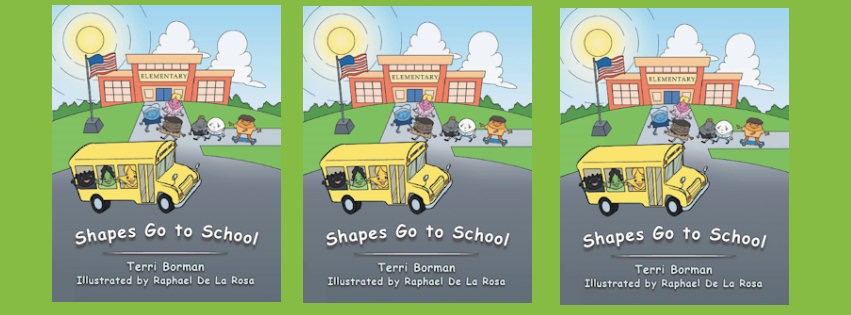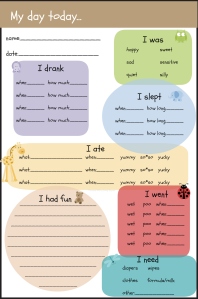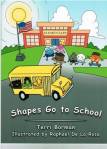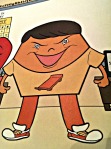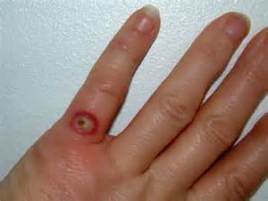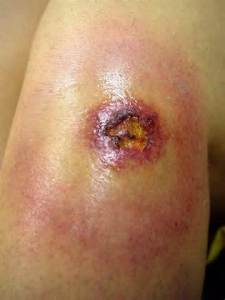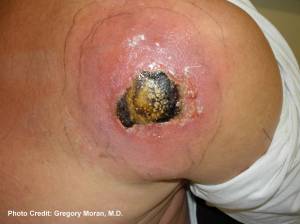Hi this is Terri Borman childcare specialist and author of Shapes Go to School. As a childcare provider it’s important that I keep track of how much the little ones eat, how many diapers they make and how much sleep they received while in my care, and I use a daily log sheet to keep track of these things. I send it home with the parents daily so they can be aware too. It’s very important that infants get all the nutrients they need to be healthy and happy babies.
Age: Birth to 4 months
Only feed infants birth to 4 months breast milk or formula. Their digestive tracts are still developing so solid foods are a bad idea. It is recommended that infants birth to 4 months eat 4-6 ounces of breast milk or formula 6 times per day.
Age: 4 to 7 Months
Here are some signs that your baby is ready to be introduced to solid foods:
- Can hold head up
- Sits well in highchair
- Makes chewing motions
- Birth weight has doubled and weighs 13 pounds or more
- Shows interest in food
- Can close mouth around a spoon
- Can move food from front to back of mouth
- Can move tongue back and forth, but is losing tendency to push food out with tongue
- Seems hungry after 6 feedings of breast milk or 36 ounces of formula in a day
- Is teething
What to feed at breakfast times:
- 4-8 ounces of breast milk or formula.
- Up to 3 tablespoons of iron-fortified cereal mixed with breast milk or formula.
What to feed at snack times:
- 4-6 ounces of breast milk or formula.
What to feed at lunch and dinner times:
- 4-8 ounces of breast milk or formula.
- Up to 3 tablespoons of infant cereal.
- Up to 3 tablespoons of pureed fruit or vegetables or both.
Age: 8 to 11 months
What to feed at breakfast times:
- 6-8 ounces of breast milk or formula.
- 2-4 tablespoons of infant cereal.
- 1-4 tablespoons of pureed fruits of vegetables or both.
What to feed at snack times:
- 2-4 ounces of breast milk, formula or 100% fruit juice.
- Up to 1/2 slice of bread or up to 2 crackers.
What to feed at lunch and dinner times:
- 6-8 ounces of breast milk or formula.
- 2-4 tablespoons of infant cereal.
- 1-4 tablespoons of your choice of protein, such as meat, fish, poultry,egg yolk. 1/2-2 ounces of cheese, 1-4 ounces of cottage cheese, or 1-4 ounces of cheese spread.
- 1-4 tablespoons of fruit or vegetables or both.
What not to feed to infants:
Infants cannot digest cow’s milk as easily as breast milk or formula and, therefore, whole milk should not be served to an infant under the age of one. Cow’s milk is intended for for providing calves all the nutrition they need to grow into healthy adult cows. It has high concentrations of protein and minerals, and it lacks some necessary vitamins, such as iron and vitamin C. Cow’s milk doesn’t provide the healthiest types of fat for growing babies and can irritate the lining of the digestive system causing blood in the stools.
Resources:
http://www.babycenter.com/0_age-by-age-guide-to-feeding-your-baby_1400680.bc
http://www.babycenter.com/0_cows-milk-when-and-how-to-introduce-it_1334703.bc
Hi this is Terri Borman childcare specialist and author of Shapes Go to School. While having fun reading my book, children learn to recognize shapes and everything in between such as colors, counting, and even diversity. To order your copy, click on the picture of Shapes Go to School. 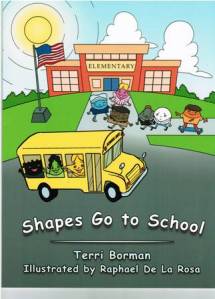
Below is the infant daily log sheet to help keep track of what was consumed, number of diapers made, and amount of sleep taken. Click on this link for a pdf of the Infant Daily Log
